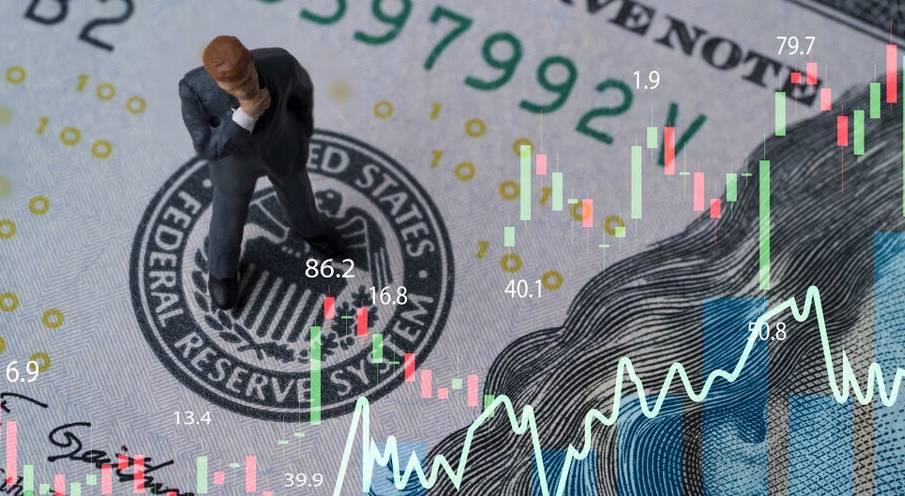U.S. Likely to Continue Raising Interest Rates
Advertisements
In recent times, the attention surrounding the United States' interest rate hikes has become a pressing topic both nationally and internationally. As the Federal Reserve navigates the complexities of the current economic landscape, multiple factors come into play that could signal whether the U.S. can continue to raise interest rates.
If we liken the U.S. economy to a massive ship sailing through tumultuous waters, we can appreciate its resilience. The vessel is robust enough to withstand some turbulence; however, it is not immune to the numerous challenges that arise from the unpredictable economic seas. Recent economic data suggest that the growth of the U.S. economy is experiencing a slowdown, akin to a ship reducing its speed. Consumption, which serves as the vital engine of this economic giant, appears to be showing signs of fatigue, reminiscent of an engine struggling to perform its best.
Continuing with a strategy of increasing interest rates in this context might seem like placing additional constraints on an already underperforming engine. The result could impede economic growth, creating more barriers for businesses and raising operational costs, thus increasing the difficulty of accessing financing. This environment could hinder companies in their efforts to expand production capabilities, innovate, and reach into new markets. Additionally, consumers may find themselves under increased financial strain from higher mortgage, car loan, and credit costs. Such developments threaten to diminish disposable income and consumer confidence, further impacting consumer spending and stifling overall economic momentum.
The employment market is another crucial indicator of the U.S. economy's health. Currently, job growth, and low unemployment rates provide a strong baseline; however, if economic growth continues to wane, the employment sector may also be pressured. Any adverse changes in job statistics will likely reduce the Federal Reserve's inclination to proceed with further rate hikes.
Inflation, often regarded as the specter hovering over decision-making in the Federal Reserve, remains a significant factor in the interest rate discourse. Over the past few years, inflation rates have surged, compelling the Fed to engage in a series of interest rate increases to rein in rising prices. However, recent data shows a decline in inflation, implying a potential easing of inflationary pressures. Should these figures remain stable and manageable, the possibility of pausing rate hikes becomes more plausible, allowing the central bank to observe ongoing economic trends without immediate intervention.
In addition to domestic concerns, the global economic landscape resembles a vast ocean, profoundly impacting the U.S. interest rate decisions. Currently, economic indicators worldwide suggest a cooling trend, akin to a chilling ocean current that spreads throughout every sector. Persistent trade tensions act as frequent storms on the high seas, which could significantly affect the U.S. economy. As we examine these factors, we can liken the situation to a boat facing turbulent seas caused by various environmental pressures.

With increasing global economic uncertainty resembling a dense fog, the Fed finds itself in the position of a cautious helmsman. This role demands careful consideration of interest rate policy adjustments to avoid drastic moves that could destabilize the U.S. economy. Such volatility could ripple across the global economic expanse, sparking adverse reactions in other nations and ultimately jeopardizing American economic interests and international standing.
Moreover, the financial markets provide critical feedback, resembling the waves that surround our metaphorical ship, and the Fed must take these fluctuations into account while creating policy. Interest rate hikes can trigger market turbulence similar to an earthquake engendering a tsunami — driving bond yields upward in a surge and sending stock prices tumbling. If markets react heatedly, the economic stability could be drastically undermined, shaking investor confidence and adversely impacting the real economy.
Despite the potential for tumult, recent performances of key stock indices like the Dow Jones and S&P 500, which have reached new heights, suggest a level of resilience akin to solid islands in a tranquil sea. Such performance provides the Fed some leeway to weigh potential interest rate hikes. They may find comfort in a safer position while evaluating a complex array of factors; however, this does not mean they can disregard the myriad influences at play. Each interest rate decision must be navigated with caution and dexterity as the Fed teeters on the edge of potential financial implications.
In summary, as the U.S. grapples with internal economic factors and external pressures, the future direction of interest rate policy remains uncertain. With the economy reflecting signs of slowing momentum, the interplay between employment statistics, inflation data, and the evolving international landscape will undoubtedly shape the Federal Reserve's approach. The decision-makers at the helm must continue to adapt, steering their course through unpredictable waters while ensuring the stability of the ship — the U.S. economy — remains intact.
Post Comment